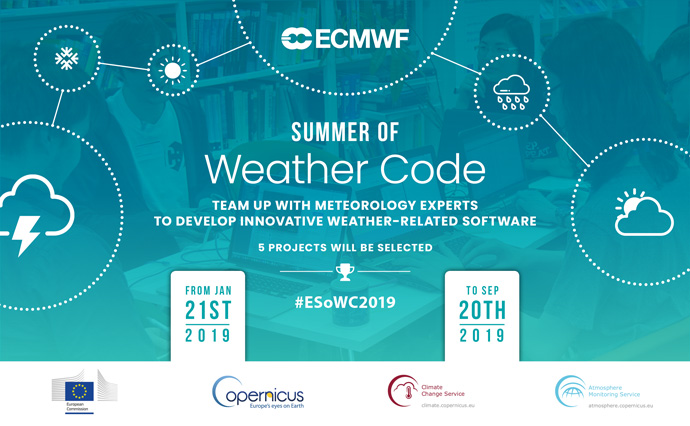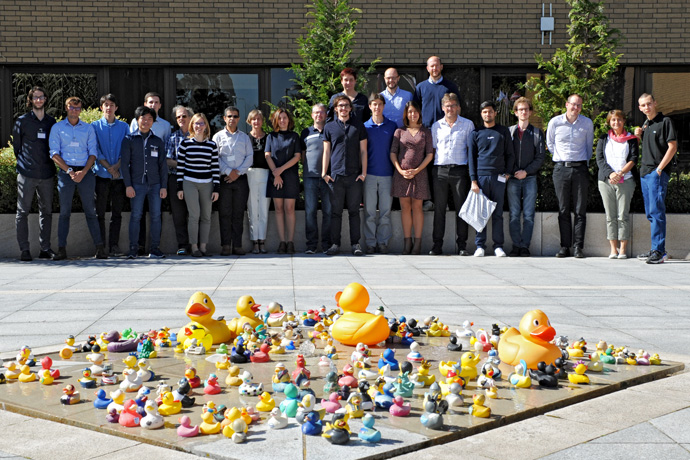
On 20 September 2019, ECMWF's Summer of Weather Code (ESoWC) brought together participants and mentors to present the final outcomes of their projects at the Centre. In total, seven weather-related software developments were released.
The event was opened by Julia Wagemann, one of the organisers of ESoWC, who highlighted the innovative nature of the projects this year: "The second edition of the ECMWF Summer of Weather Code resulted in outcomes useful for ECMWF and the broader open-source community. The high-quality of the results of ESoWC 2019 is testimony to the commitment and dedication of everyone involved in the programme".
The first coding team used an unconventional image to illustrate their work on an interactive Jupyter notebook for OpenIFS, as if the easy-to-use version of the ECMWF's Integrated Forecasting System was a classic car hoping to be modernised by Python code. View presentation: Python-based interface to ECMWF's Integrated Forecasting System single model column
The aircraft metadata team explained how matching aircraft types from Aircraft Meteorological Data Relay (AMDAR) reports with those from airline websites can help to better understand aircraft observations. The knowledge of the aircraft type would be useful for evaluating temperature biases and wind errors. View presentation: Obtaining online aircraft metadata
The next ESoWC team introduced new calibration software called ecPoint-Calibrate that provides a dynamic environment for post-processing model parameters. Their presentation takes a closer look at this software and its applications for users. View presentation: Extend ecPoint-PyCal for conditional verification applications
The visualisation team presented the Blender Visualization toolkit (BVtk), a powerful software package that combines Blender and the VTK Visualization library to create 3D animations using the earth data produced at ECMWF. View presentation: BVtk: Scientific Visualization Inside Blender
The next team showcased functionalities of open-source geographic information systems to address workflow problems within the CEMS-EWS European Flood Awareness System (EFAS). View presentation: GIS-based dissolve functionalities using GRASS GIS
The last two trailblazing ESoWC projects aimed to explore the possibilities of machine learning techniques applied to climate science. They were supported by the Copernicus services operated by ECMWF.
One of the projects developed a Python machine learning pipeline designed to predict drought in Kenya. View presentation: Machine learning to better predict and understand drought
The other machine learning project compared four different machine learning models to forecast flooding events. View presentation: MAchine learning TEchniques for High-Impact Weather (MATEHIW)
ESoWC day ended with the announcement of ESoWC 2020, where innovation, open-source and weather-related software will continue to be at the core of a programme at the service of the scientific community.
More information about the seven open-source projects is available on GitHub.
All updates on Twitter: @esowc_ecmwf and #ESoWC2019

Participants and mentors got together to showcase ESoWC final projects at ECMWF.
